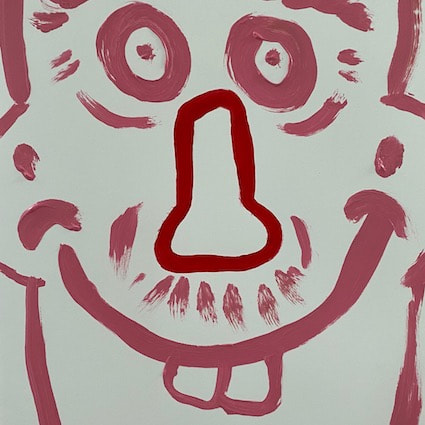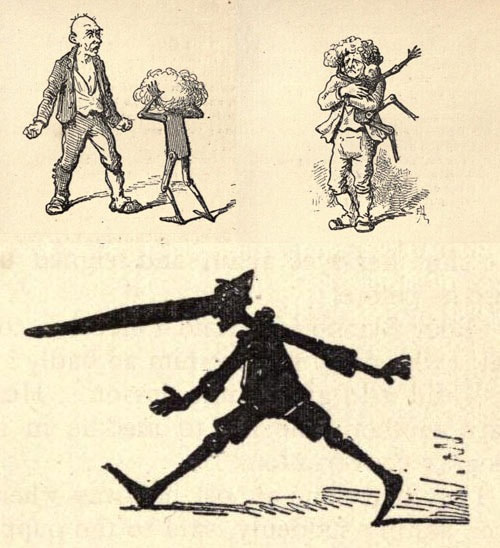THE #REDNOSEDOODLE DAY AND MORE ...
A project (or two) on Noses. Really? What's that about?!
|
The short answer is Red Nose Day. Let's have some fun, celebrate, erm, noses, and make good things happen via creative learning and play.
You can take part as an individual, small group, club, class or even as a school-wide challenge. It's accessible, low-risk and, importantly, lots of fun! Everything you need can be accessed and downloaded below. All resources here and across this website are shared for free and in good faith - all in support of art education. So, if you're able to make a donation, large or small, to this fundraiser for Comic Relief, well, that would be awesome. It's good to share your biscuits. |
HOW CAN I TAKE PART?
EVERYTHING YOU NEED TO KNOW FOR THE #REDNOSEDOODLE DAY
- Read through the notes below and download the related pdf resources to prepare. You might complete one doodle or, if you're super-keen or working as a team, a full set! You can work digitally upon the downloaded images, or print the resources to work directly upon, or simply re-draw the nose-shapes as you wish (just remember to keep them red!). Doodling-fun(draising) is the main aim!
- Donate here or via the link above - all donations go directly to Comic Relief. Read more about their work here. There's no set amount, just a friendly invitation to do so, if you can.
- And then, if you wish, share your responses via Instagram with the hashtag #rednosedoodle. Remember to tag @artpedagogy for sharing wider.
LET'S DO IT!
How does it work? Pick a nose and create a doodle! It's that easy. Read on to find out about the why, how and what-not. Good to have you on board!
|
This chart shows the results from G.W Paget's 1932 study of the various symbols children around the world use to draw noses. I'm not sure of it's present-day validity, but it's totally delightful - don't you think? It is taken from Maureen Cox's wonderful book, Children's Drawings.
#rednosedoodle challenge is for all and very straightforward: Pick a nose and doodle a face around it.
|
GETTING STARTED
- Pick a nose from the selection above and draw it out in red - be it pencil, paint, ink, lipstick, collage ... whatever. This might be on a tiny scrap of paper, in the margins of a very important document, or on the side of your neighbour's largest pet (best check first). For the record, perhaps go with A5 or a4 paper.
- Doodle away! And then share; celebrate doodling as a GOOD THING. And remember to donate, if you can.
- Why not turn your doodle into a gift or card for someone special? - Thanks for putting the bins out; Happy Red Nose Day!; Who nose why, but I love ya! - erm, that kind of thing.
Alternatively - and especially if you're working with a group - you might want to download the doodle-ready resources, below. Read on for further suggestions for group activities.
RESOURCES
|
A4-sized print-friendly noses
This pdf provides 100 different red noses taken from Paget's research - one per page, perfect for larger scale doodling, or even creating your own interactive wall. See the pictures and notes below for how this might be done. | ||
|
10 x A4 print-friendly grid with 6 different noses
Perfect for an at-the-table class activity or even as a cover lesson resource. Simple instructions included. | ||
A #rednosedoodle interactive wall. For this, A4-size designs were used (downloadable above). A range of tools and colours were available to select from, e.g. brushes, pens, ink and various paint colours, and students were invited to pick a nose and respond as they wish.
SUGGESTIONS FOR CREATING AN INTERACTIVE WALL
- There's nothing more inviting than a large space to doodle upon collaboratively! If you've the room, it's a great way of getting students to respond intuitively and expressively. Standing-up gets the arms moving and drawn marks can have more immediacy and energy.
- Invite students to make connections between responses and to re-curate the faces as they work - lots of fun to be had mixing and matching faces. Add speech bubbles for extra entertainment and/or profundity.
- Limit the materials available to keep some cohesiveness across responses. Brushes and ink, coloured paper for collage, marker pens or felt-tips all have the potential to encourage brave responses.
- A corridor space works well if you want to run this as a lunchtime activity for all - invite passers-by and unsuspecting staff to join in! It's a lovely way to bring others into the art department.
|
GOOD LUCK AND ENJOY! REMEMBER TO DONATE AND, IF YOU WISH, SHARE YOUR RESPONSES #rednosedoodle
And if you fancy further related art mischief - read on! What follows is a lesson plan/provocation to, erm, pick at noses a little deeper.
NEXT-LEVEL NOSES! LESSON RESOURCEs FOR NOSE-NERDS AND ART-ADVENTURERS
This one-week challenge has been written with Year 12 students in mind but is suitable for all ages. It's an opportunity - an invitation! - to respond to a given starting point. We're going to run this for a week leading up to Red Nose Day, Friday 15th March and see how it goes. Feel free to join in too!
Click on the images to enlarge. Follow the links below for further info. Clockwise from top left:
- Statue of pharaoh Senwosret III, who ruled in the 2nd century BC
- Nikolai Gogol (1809-1852) was a Russian novelist. His works often satirised Russian society and government. “The Nose” is one of his most well-known and surreal works.
- Nose covering, from Gasparo Tagliacozzi, De Curtorum Chirurgia per Insitionem, 1597
- Pinocchio, the story of a puppet, by “C. Collodi” (1900)
- John Baldessari, Nose, 2006
- Nose amputating knife. Woodcut from undated Peck & Snyder catalogue
There’s certainly something absurd - and consequently appealing (to me, at least) - about ‘Noses’ as a project title. It’s so specific. It’s surreal and limiting, and it’s definitely not ‘Natural Forms’ or ‘Structures’ (whilst of course, it's both those things). AND stereotypically, noses in art education often appear as isolated drawings in sketchbooks. It's a thing...
|
Delightfully weird, yet rarely intending to be so. These peculiar floating monoliths are often promoted as ‘portrait practice’, be it via dated teacher-exemplars or the Tik-Tok school of ‘how to get a Level 9’. As if individually cooking all the ingredients of a cake will help you get it baked. (IMPORTANT NOTE: other opinions available. I'm just stirring the pot).
So, as resources go, this is a potato not a pepper. It’s an invitation. A challenge. A deliberate pedagogical strategy to make things harder for art students. Or, as Gert Biesta, educational theorist sort-of puts it: to come to terms with the desirability of their desires. Because the world doesn't always give us what we want, and schools should help students to learn to navigate that - and to adapt, cope, collaborate and create in original and empowering ways. Plus, it might just be fun. So, Noses it is, then. Let’s run with it! |
ACTIVITY-CHALLENGE
- Make art in response to the broad (absurd, unusual, specific, fun, profound, surreal ...) theme 'Noses'.
- Conduct research, experiment, test and explore. Use any materials you wish; work in whatever style and format of your choice.
- Produce both sketchbook/development work and a more resolved outcome/set of explorations.
|
|
Above, from left:
|
TOP TIPS & POTENTIAL STARTING POINTS
Where to begin when given a seemingly random or absurd starting point - especially if it's one you didn't wish for? Well, the best starting point is an adventurous and positive mindset; a sense - awareness, determination, belief - that, via creative thinking, play and connection-making, EVERYTHING HAS THE POTENTIAL TO BE INTERESTING! Yey! Here are some tips on how you might get going ...
- Collide the theme with your key creative interests and strengths. If you'd rather paint a landscape: re-image the nose as an element of that; if abstraction is more your thing: let shapes, microscopic details, sensory responses or associations influence your mark-making.
- Wider reading and research can definitely open-up new connections and possibilities. Try to avoid the obvious and stereotypical (and Pinterest). It's good to stay alert for lesser-known details, peculiar facts and unexpected 'invitations' to create.
- That said, it's often good to cut straight to making. You don't necessarily need a grand concept or idea. Let the materials lead the way, be it painting, printing, sculpture or, well, whatever materials you choose. Remember your response doesn't have to necessarily be easily understood, connected to, or recognisable as a the theme. Trust your creative intuition. Follow your nose!
GOOD LUCK AND ENJOY! REMEMBER TO DONATE HERE AND SHARE YOUR RESPONSES #rednosedoodle






























